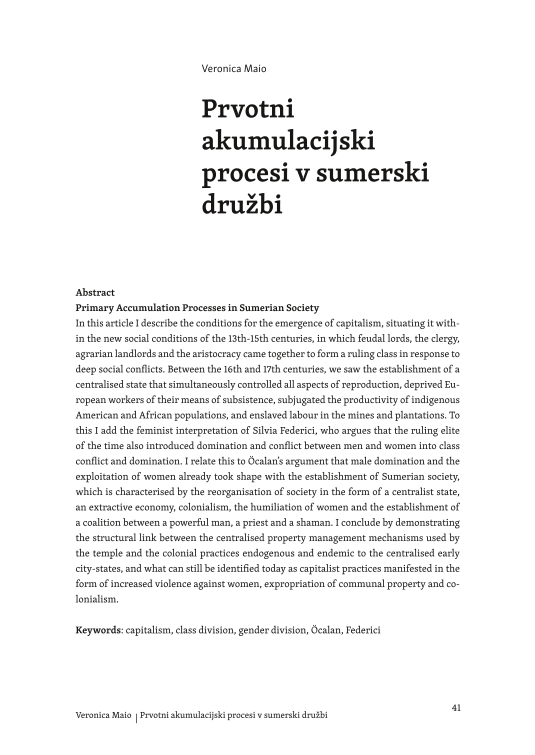In this article I describe the conditions for the emergence of capitalism, situating it within the new social conditions of the 13th-15th centuries, in which feudal lords, the clergy, agrarian landlords and the aristocracy came together to form a ruling class in response to deep social conflicts. Between the 16th and 17th centuries, we saw the establishment of a centralised state that simultaneously controlled all aspects of reproduction, deprived European workers of their means of subsistence, subjugated the productivity of indigenous American and African populations, and enslaved labour in the mines and plantations. To this I add the feminist interpretation of Silvia Federici, who argues that the ruling elite of the time also introduced domination and conflict between men and women into class conflict and domination. I relate this to Öcalan’s argument that male domination and the exploitation of women already took shape with the establishment of Sumerian society, which is characterised by the reorganisation of society in the form of a centralist state, an extractive economy, colonialism, the humiliation of women and the establishment of a coalition between a powerful man, a priest and a shaman. I conclude by demonstrating the structural link between the centralised property management mechanisms used by the temple and the colonial practices endogenous and endemic to the centralised early city-states, and what can still be identified today as capitalist practices manifested in the form of increased violence against women, expropriation of communal property and colonialism.




